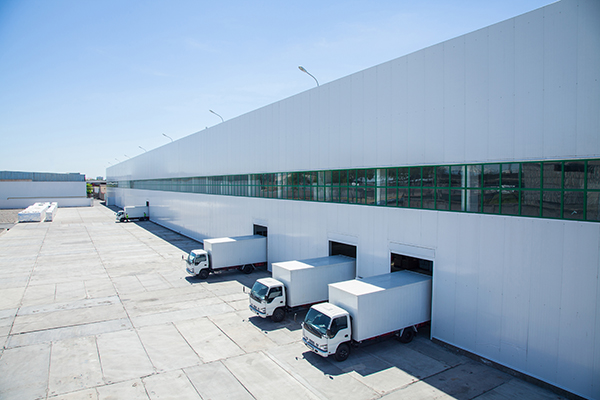JLL research points to further COVID-19-industrial real estate gains

As the number of people shopping online continues to rise in the United States, so, too, do the growth levels for industrial real estate, specifically warehouses and distribution centers, according to data recently issued by Chicago-based real estate and investment management firm JLL.
Driven largely by the combination of the ongoing COVID-19 pandemic and sheltering-in-place policies, which have, in turn, spurred on increased e-commerce activity and the subsequent need for additional industrial real estate space, JLL said it is pegging e-commerce sales to hit $1.5 trillion by 2025, well ahead of 2019’s $602 billion, as per Digital Commerce 360 data. That estimate would boost U.S. industrial real estate demand, from its current 13,579,524,662 square-feet, to another 1 billion square-feet, according to JLL data.
The firm noted that the impact of the COVID-19 pandemic on e-commerce and industrial real estate is also highlighted by the fact that before COVID-19 took hold, the firm tied up to 35% of its industrial leasing to e-commerce. But that has taken a sharp upward turn, with JLL saying it expects e-commerce to increase by 20% in 2020.
Craig Meyer, President, JLL Americas Industrial, observed in the research that going back to 2011, industrial rent growth has been positive and vacancy rates have been at historic lows providing attractive, stable, long-term returns to investors.
“These solid fundamentals and the fact that e-commerce still has a long runway for growth makes industrial real estate the darling of the commercial real estate industry,” he added.
While U.S. industrial real estate is pegged to head up by another 1 billion square-feet by 2025, Rich Thompson, JLL’s global Supply Chain & Logistics Consulting Leader, noted in an interview that this estimate could actually be viewed as somewhat conservative.
“In recent months, we have seen a lot of different numbers, for things like e-commerce sales and basis points for leasing, from different sources, and, in doing our own due diligence, it continues to confirm that e-commerce will only continue to grow, which confirms our estimates,” he said.
Thompson added that when looking back at where e-commerce was as a percentage of total retail sales, at the end of 2019, it was relatively low, and has subsequently gained significant traction, as proven out by the pandemic.
“It will only accelerate, and the adoption rates by older people that typically had not turned to e-commerce before, for things like groceries, have gone up,” he said. “There is a lot or runway left with e-commerce, specifically for related facilities like e-commerce fulfillment centers that are dealing with individual packages more so than pallets in and out of facilities. These places are bigger and have more people working there and more SKUs, too.”
With that as a backdrop, Thompson said he views the pipeline for continued e-commerce related real estate demand as robust.
Using online grocery, which has accounted for around 3.5% of e-commerce activity as an example prior to the pandemic, he said that is something that will continue to gain traction, when the COVID-19 pandemic is eventually in the past.
Another thing to monitor, according to Thompson, is inventory management and safety stock efforts, for critical parts and medical equipment.
“If inventories were to increase by 5%, some people think that could drive another 300 million square-feet of industrial real estate in and of itself, but I do think there will be some incremental inventory safety stock of critical items and critical parts as a risk management play,” he said. “Our current numbers do not take that into consideration.”

Article Topics
3PL News & Resources
Ryder opens up El Paso-based multi-client facility logistics facility April manufacturing output takes a step back after growing in March TIA rolls out updated version of framework focused on fighting freight fraud National diesel average is down for the third consecutive week, reports EIA GXO’s acquisition of Wincanton is a done deal Q1 sees a solid finish with strong U.S.-bound import growth, reports S&P Global Market Intelligence UPS rolls out fuel surcharge increases More 3PLLatest in Logistics
S&P Global Market Intelligence’s Rogers assesses 2024 import landscape Pitt Ohio exec warns Congress to go slow on truck electrification mandates Q1 intermodal volumes are up for second straight quarter, reports IANA Supply Chain Management Software: Build the foundation, deliver the value 2024 State of Freight Forwarders: What’s next is happening now Ryder opens up El Paso-based multi-client facility logistics facility Autonomous mobile robots (AMRs) on a mission to automate More LogisticsAbout the Author
Subscribe to Logistics Management Magazine

Find out what the world's most innovative companies are doing to improve productivity in their plants and distribution centers.
Start your FREE subscription today.
May 2024 Logistics Management

Latest Resources














